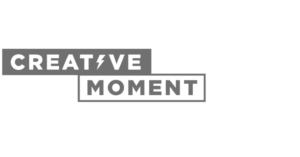
Last week, The Guardian ran a high profile interview feature with one of the most important players in modern digital media. He goes by the name of PewDiePie, a Swedish-born, London-living star of online video who, by 2014, ranked higher than the group editor of Trinity Mirror- Britain’s largest regional publisher- in the same paper’s annual list of industry big wigs.
This week, Radio 4’s Media Show hosted a heated debate on the future of the BBC. One of the key issues discussed was the renewal of the broadcaster’s charter. At the moment, the document is updated every decade. Many experts recommend this timeframe is reduced to avoid the risk of becoming outdated, the idea being to create a fresh version once every five years.
Seemingly disparate points of reference, they accentuate a key point we must all accept- even here at Smoking Gun towers. Regardless of how much you immerse yourself in the changing landscape of news, content, marketing and PR, it’s impossible to predict what that landscape will look like in 12 months time. Let alone a decade. Significant names emerge, seemingly from nowhere, tech and mediums develop, and even one of the planet’s best-funded organisations will struggle to keep up.
Nevertheless, people talk, and predictions are made. Right now we’re told the old world is done, and traditional platforms are on their way out. In the US, ESPN is preparing to cull staff numbers by thousands as a result of people ‘unplugging’- i.e. switching off their TV sets and opting to watch content on demand instead. Conversely, Vice, a major name in the media future as is currently forecast, has just unveiled plans to launch 12 television stations across Europe in the next 12 months. And by television stations, they do not mean online.
Elsewhere, Sky recently hit out at YouTube after the website’s parent, Google, told advertisers they should be spending 25 per cent of their overall budget on the platform, an attempt to lure them away from traditional broadcasters. According to Sky, YouTube’s viewing figures are fraudulent.
That’s some claim, but it may hold some truth too. As per a study by European researchers in September, when automated bots were unleashed on YouTube in a bid to see whether these would be registered as ‘views’, 25 out of every 150 views by a bot counted as legitimate. Nevertheless, 91 from those 150- more than 60 per cent- were charged back to advertisers. This suggests YouTube’s ability to detect whether it’s you, me, or computer software logging on may not be that robust.
So what can we learn from all this, and where am I going here? Put simply, it’s vital not to be blinded by figures and numerical information. Similarly, sages. Every day news story contradicts news story, research negates previous findings, and those who believed one thing may be convinced into siding with the polar opposite. Enjoy a momentary divergence into this logging of the Daily Mail’s oft contradictory stories on what cases cancer, for example). The key is to judge on individual experiences- whether that’s a marketing campaign or Netflix subscription. One option may not suit everyone. In fact, it never does. Food for thought next time there are significant decisions to be made.
Our Awards
Why stop at global stardom and incredible sales? When our clients work with us, they get the silverware to boot. We’re not into tooting our own horns, but the awards we’ve won with our clients are too good to miss…









